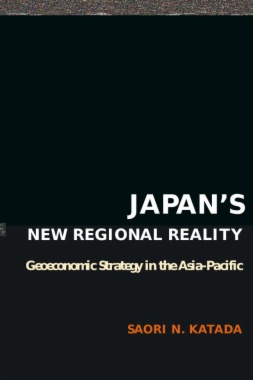Since the mid-1990s, Japan’s regional economic strategy has transformed. Once characterized by bilateralism, informality, and neomercantilism, Japanese policy has shifted to a new liberal strategy emphasizing regional institution building and rule setting. As two major global powers, China and the United States, wrestle over economic advantages, Japan currently occupies a pivotal position capable of tipping the geoeconomic balance in the region.
Japan’s New Regional Reality offers a comprehensive analysis of Japan’s geoeconomic strategy that reveals the country’s role in shaping regional economic order in the Asia-Pacific. Saori N. Katada explains Japanese foreign economic policy in light of both international and domestic dynamics. She points out the hurdles to implementing a state-led liberal strategy, detailing how domestic political and institutional changes have been much slower and stickier than the changing regional economics. Katada highlights state-market relations and shows how big businesses have responded to the country’s interventionist policies. The book covers a wide range of economic issues including trade, investment, finance, currency, and foreign aid. Japan’s New Regional Reality is a meticulously researched study of the dynamics that have contributed to economic and political realities in the Asia-Pacific today, with significant implications for future regional trends.
- Table of Contents
- List of Figures and Tables
- List of Japanese Terms
- Acknowledgments
- List of Acronyms
- Introduction
- 1. Japan’s Regional Geoeconomic Strategy
- 2. Foreign Economic Policy, Domestic Institutions, and Regional Governance
- 3. Geoeconomics of the Asia-Pacific
- 4. Transformation in the Japanese Political Economy
- 5. Trade and Investment: A Gradual Path
- 6. Money and Finance: An Uneven Path
- 7. Development and Foreign Aid: A Hybrid Path
- Conclusion
- Notes
- Bibliography
- Index

